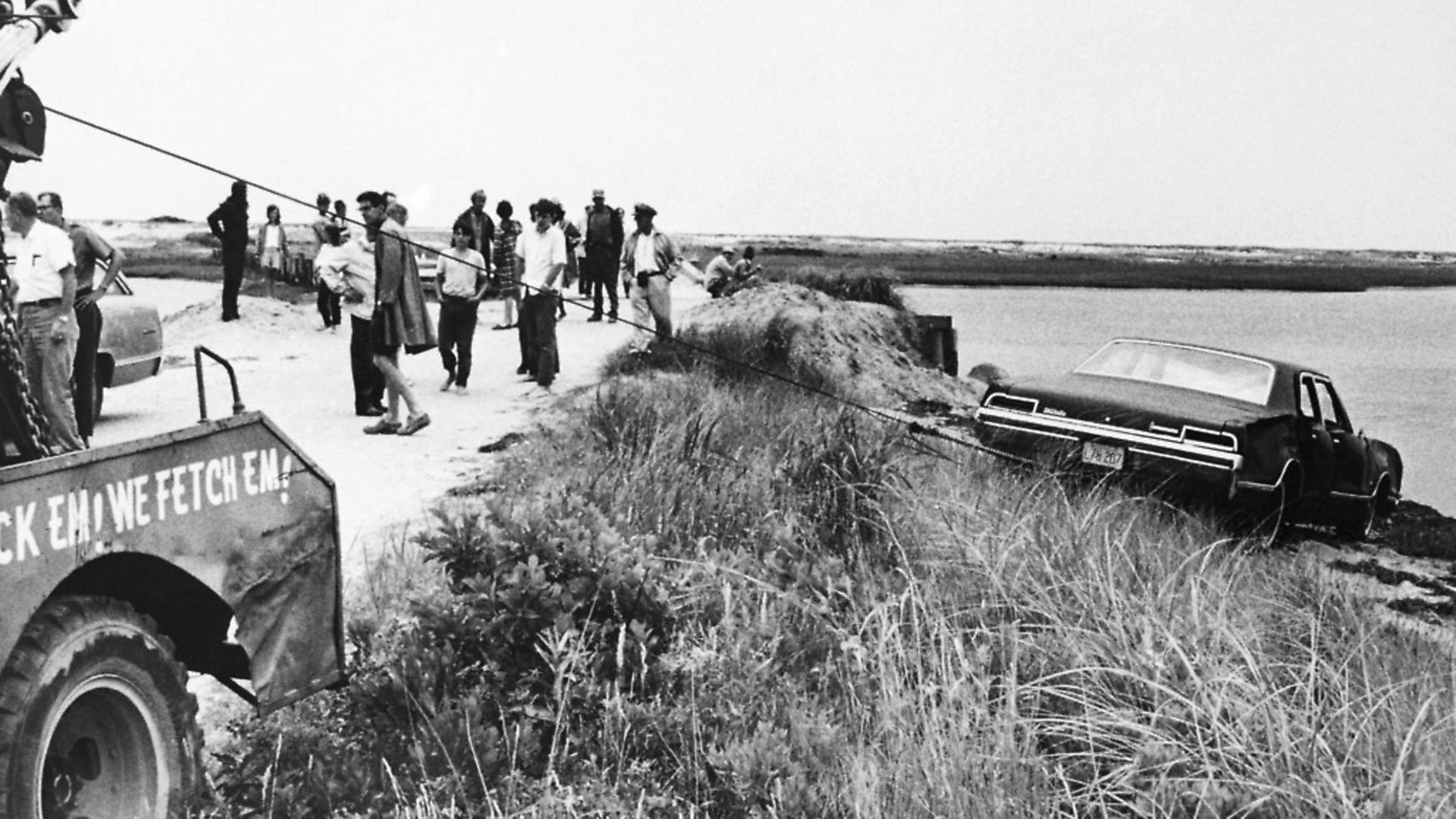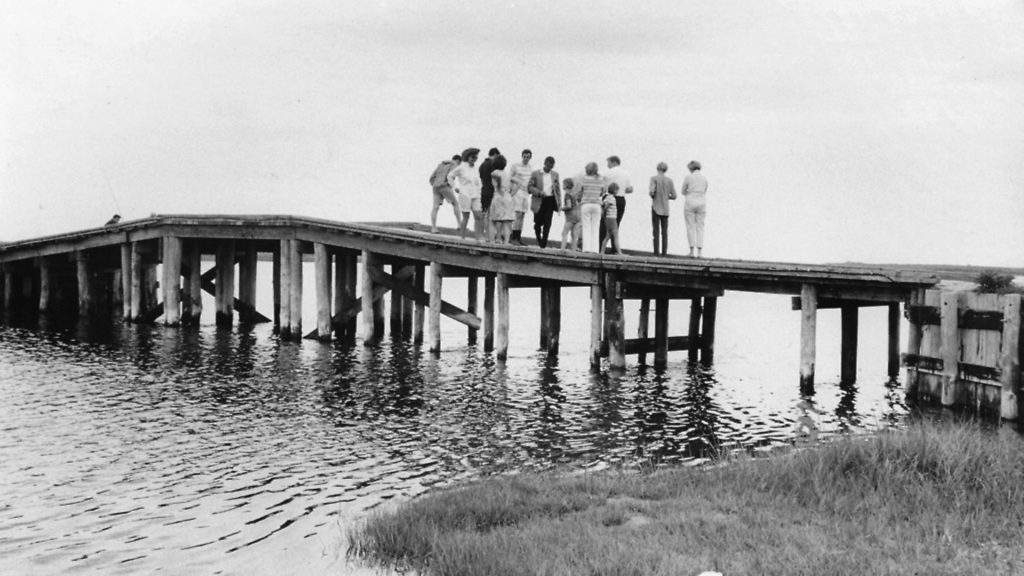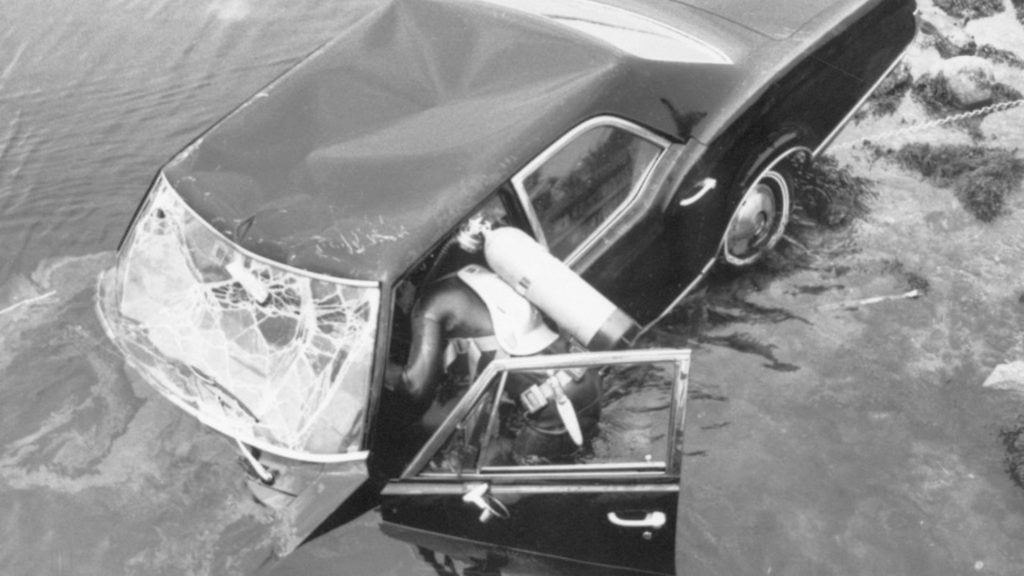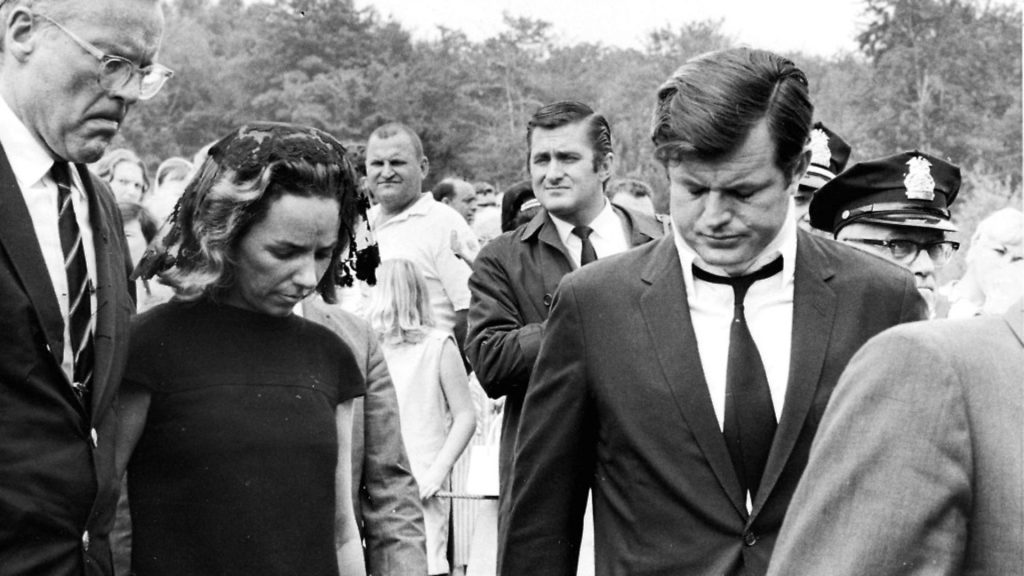
Her name was Mary Jo Kopechne. She was born in Wilkes-Barre, Pennsylvania, on July 26, 1940. The date of her death cannot be so easily pinpointed. She died either in the final few minutes of July 18, or the first few of July 19, 1969, on Chappaquiddick Island, Massachusetts.

Kopechne, Chappaquiddick, Kennedy – words as alliterative as they are forever bound together in the annals of American infamy. The Kennedy in question was Edward, the younger brother who seemed destined to enjoy the long political life so cruelly denied his siblings. And indeed Ted Kennedy would spend the better part of five decades in the Senate. But hopes of occupying the White House all but died that day in the cold water on that warm evening on Chappaquiddick, along with Mary Jo Kopechne.
Exactly what happened that night a half-century ago remains unclear. Ted Kennedy’s own account sheds some light on the tragedy but since elements of his story have proved to be misleading, it’s by no means authoritative. What we do know is that July 18 was the day on which Chappaquiddick played host to a party in honour of the Boiler Room Girls, the young women who’d worked so tirelessly on Robert Kennedy’s 1968 presidential campaign. Those present at Lawrence Cottage included Mary Jo, Ted Kennedy, his fraternal cousin Joe Gargan, his attorney friend Paul Markham, three other adult males and about a half dozen female campaign workers.
Around 11.15pm, Kennedy and Kopechne left the party, the senator claiming that Mary Jo had asked him if he would be “kind enough to drop her back at her hotel” on the neighbouring island of Martha’s Vineyard. That Mary Jo left her purse at the party and told none of her friends she was leaving has caused some to call into question this version of events.
Kennedy – who made no secret of the fact he’d been drinking – further claimed that he got lost on the way to Chappaquiddick’s ferry terminal and in trying to right his mistake found himself driving across the rickety Dike Bridge.

It was here that the accident happened. The senator lost control of the car and crashed into a body of water known as Poucha Pond. The black Oldsmobile Delmont 88 came to rest underwater and upside down. In court, Kennedy would claim that, while he was able to swim free from the wreckage, Kopechne was not. Despite, by his own estimation, seven or eight attempts to rescue the woman, Kennedy was unable to free her. In shock, he left the water and rushed back to Lawrence Cottage in search of help.
In hurrying back to the party, Kennedy passed a number of houses, none of which he claimed to have noticed, this in spite of them being clearly occupied at the time of the tragedy. Upon his return to Lawrence Cottage, the senator told Gargan and Markham what had happened and the three men swiftly returned to the scene of the accident. In the excellent After Camelot, J. Randy Taraborrelli writes that Kennedy, Markham and Gargan again tried to pull Mary Jo from the car but to no avail. It was then, the author claims, that Kennedy posed a hypothetical question.
“So look, what if Mary Jo had been driving alone? And what if she just went off the road? No one needs to know I had been in the car. No one saw us drive off so that could work! We could say that!” No, they couldn’t, Markham and Gargan replied. Nor would they act on Kennedy’s other suggestion that they inform the police that they had come across the accident, not mentioning that he had anything to do with it. Instead, his two friends insisted that the senator report the accident immediately. Kennedy, incensed that the pair wouldn’t do as he asked, raged that he’d deal with the matter himself and then dived into the water. He was to return to his hotel in Edgartown, on Martha’s Vineyard, under his own steam.
When the three men met up at the Shiretown Inn the following morning, it quickly became apparent that Kennedy hadn’t gone to the authorities. Only after Markham and Gargan explained that they could place him at the scene of the accident – and no, they wouldn’t claim otherwise, no matter how much the senator pleaded – would Kennedy pay a visit to the local police station. Nearly 10 hours had elapsed since the car hit the water.

Speaking of the vehicle, it had been discovered by fishermen around 8.45am, a short while before Kennedy went to the police. The flurry of activity to retrieve Mary Jo Kopechne from the car was almost as frantic as the activity at the Kennedys’ Hyannis Port compound, on the Massachusetts mainland, where the business of the day was the retrieval of Ted Kennedy’s political career. Pretty much the entire clan was present, even deathly ill patriarch Joseph and estranged sister-in-law Jackie. The family’s soul-searching would produce a 13-minute public address the senator would make on July 25, two days after the funeral of Mary Jo Kopechne – an event Ted Kennedy attended wearing a neck brace. That night, Kennedy’s fellow Americans saw the Massachusetts senator deny he had been intoxicated on the evening of the 18th. Nor had there been any impropriety in his relationship with Kopechne. He described his failure to immediately report the accident as “indefensible”, adding that he “felt morally obliged to plead guilty to the charge of leaving the scene of an accident”. The last great hope of his family further wondered “whether some awful curse [hangs] over all of the Kennedys.”
What Kennedy didn’t do was say that he would never again pursue high office. It was a notion he’d contemplated during the Hyannis Port conference only to be talked out of it by the family. And while he didn’t contest the presidential elections of 1972 and 1976, Kennedy escaped the Chappaquiddick affair sufficiently confident to challenge incumbent Jimmy Carter for the Democratic Party nomination in 1980.
It was an ambitious play that didn’t really go anywhere. Still, he could console himself with his senate seat, a political office he’d first occupied in 1962 and wouldn’t vacate until his death in 2009. Not bad for someone who’d pled guilty to leaving the scene of a crime involving a fatality, an offence for which he received a two-month suspended sentence.
The privilege that protected Kennedy also led many to question the role Mary Jo Kopechne played in her demise. To read Taraborrelli’s account of what happened at Hyannis Port is to be confronted by a family wondering out loud ‘Oh why did that stupid girl drown?!’ Indeed, though the Kennedys never went as far to claim that the accident was actually Mary Jo’s fault, they did little to stifle the rumours that she was a groupie bent on bedding the senator.
The truth of the matter is that Mary Jo Kopechne – like all the Boiler Room Girls – was an intelligent political operative with a great sense of duty and a real commitment to the Democrat cause. That the Kennedys scoffed at the notion Ted would have anything to do with her on account of Mary Jo being “so plain” is but one of many insults the Kopechne family have had to swallow.
Worse than the Kennedys’ cruel words and sense of entitlement is the evidence suggesting Mary Jo Kopechne’s life could have been saved had the senator gone to the authorities sooner. At the 1970 inquest into the accident, rescue diver John Ferrar testified under oath that “the girl suffocated. She was totally conscious and able to hold her face deep into the [car’s] foot well and availing herself of the last air in the automobile. I think she survived at least an hour, possibly as long as two. There’s no question that if we had been notified of the accident, we would have saved her life.”
That Mary Jo Kopechne didn’t drown but rather asphyxiated should have forever focused the attention of accusers upon the car’s driver rather than its passenger. And yet still it wouldn’t be until 2017 and the release of the feature film Chappaquiddick (The Senator, in the UK) that the gossip fully gave way to hard fact.
In casting Kate Mara as Mary Jo, director John Curran put to bed the lie that Kopeche was a besotted bobbysoxer, Mara being one of those rare actors who can only play fiercely intelligent. Curran also got lucky when it came to casting the male leads, Jason Clarke capturing Kennedy’s stolidness while underplaying his selfishness so that he never seems spoiled; Ed Helms cast wonderfully against type as the put-upon Joe Gargan, the cousin raised as a Kennedy brother who would distance himself from the clan after Chappaquiddick.
Sifting through the wreckage of the Chappaquiddick incident, it’s still hard to believe Edward Kennedy never saw the inside of a prison cell. Perhaps, as has been suggested elsewhere, collective guilt over the assassinations of Jack and Robert Kennedy meant people were willing to grant their brother a pass.
Then again, maybe it was the fact that the world was looking elsewhere that fateful weekend that spared Kennedy’s skin. Neil Armstrong stepped on the surface of the moon late in the evening (for east coast USA) of July 20 – the day after Kopechne’s body was recovered – sparking global elation of a sort never seen before or since. So vast was the joy, few people wanted to deal with such everyday horrors as drunk-driving and premature death. There might be irony in the fact that Jack Kennedy started the very space race that helped get his brother Ted off the hook, but it will be wasted on those who cherish the memory of Mary Jo Kopechne.









